Your cart is currently empty!
Sizing Guide
Held Gear products will last for many years, so it is important to get the perfect fit. That is why we include a Sizing Guide within product listings. The tabs below offer tips to help you discover your measurement and choose the right size.
The most general rule to know is that when a belt or accessory wraps around your body, the distance it needs to link up is greater than your actual body. So, the rule is to round up to the nearest size.
If a product that you are looking at hasn’t yet been updated with a sizing guide, please feel free to contact Sean and motivate him to get it done.
BELTS
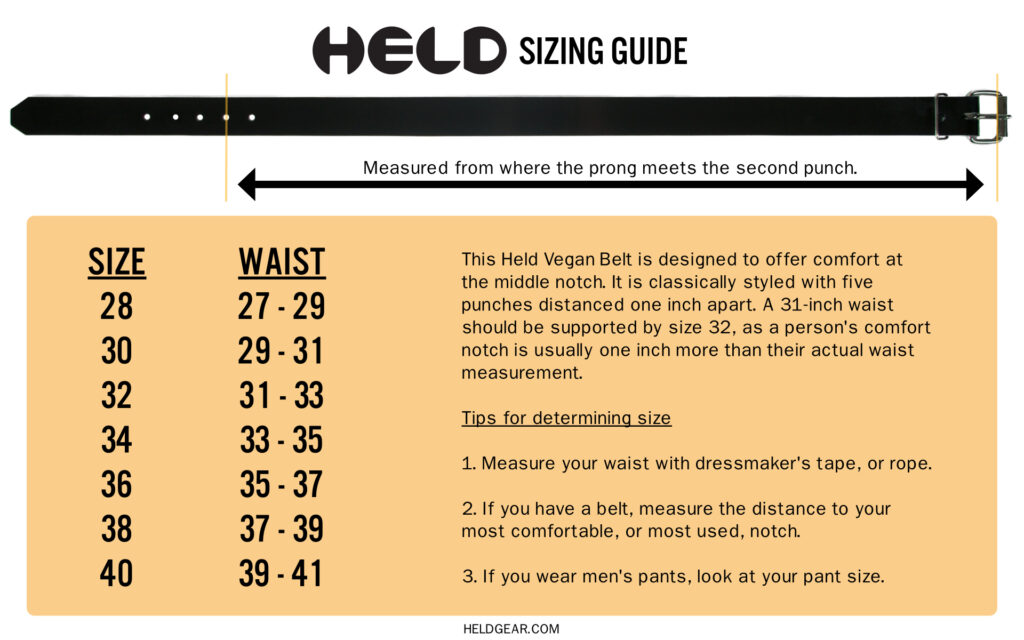
Most Held Belts are designed to fit you just right at the middle notch. There are exceptions to this rule, so it is important to fully read the description of every product before selecting your size.
Professionals use dressmaker’s tape for its ease in matching the contours of the body, but not everybody has this on hand. A good stand in would be a stretch of rope, marking where it meets up with itself, then measuring that distance with a yardstick or measuring tape.
A correct pant size and an existing belt will also work quite well. Measure the distance from the buckle prong to the notch you use most frequently. If you have correctly fitting pants then you can assume it’s your waist as well.
Match your finding with the sizing chart before completing the order.
Refer to Your Pants
If you have absolutely no way to measure, observe your pant size and match it or round up one inch.
If the pant size is an odd number, round up one inch. In this video, the pants are loose from age, even though my waist is larger than the size on the tag. I know, it’s weird.
If the pants fit quite nicely at an even number, that is the belt you want, and it is probably your measurement too.
Women’s pants do not correlate to waist size, so this point applies mostly to men’s wear.
Fit an Existing Belt
For this method, you can use any belt that notches up tight on your waist. After that, you need a yard stick or measuring tape.
The distance between the buckle’s prong and the notch that fits you is approximately your waist size.
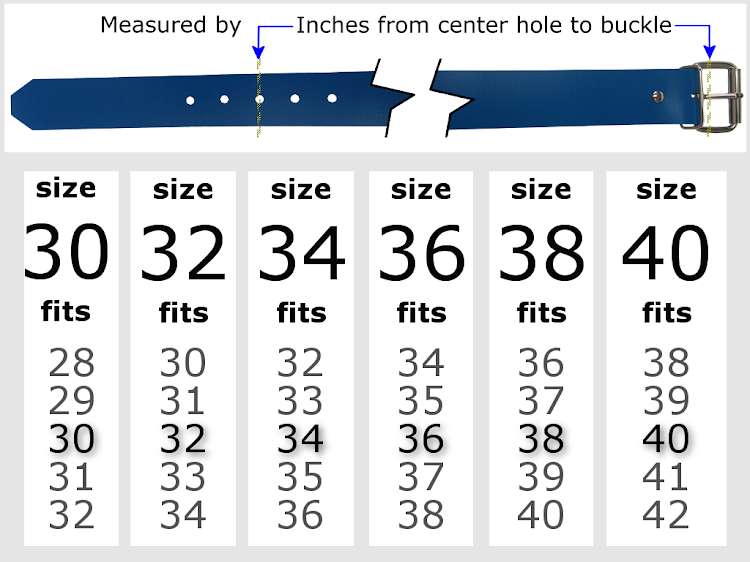
Measure Your Waist
This is the absolute best way to measure for the right belt, but it does require dressmakers tape.
See the video to understand where to measure. It is important to measure at the hip bone, as this is where pants and belts traditionally rest.
You can substitute dressmakers tape with rope or string. Simply mark the point on the string that meets back up to your hip after wrapping around, then measure that with a yard stick or measuring tape.
Ordering The Right Size
If you have all three of these numbers, then you are surely ready to put in your next Held belt order.
The tightest notch on your belt should be equal to or one inch smaller than the actual measurement of your waist.
Standard issue designs are made in small batches to keep an inventory ranging between sizes 28 and 38, accommodating waists from 26 to 40 inches.
Custom tailored orders are always available, just contact the shop directly.
CHOKERS
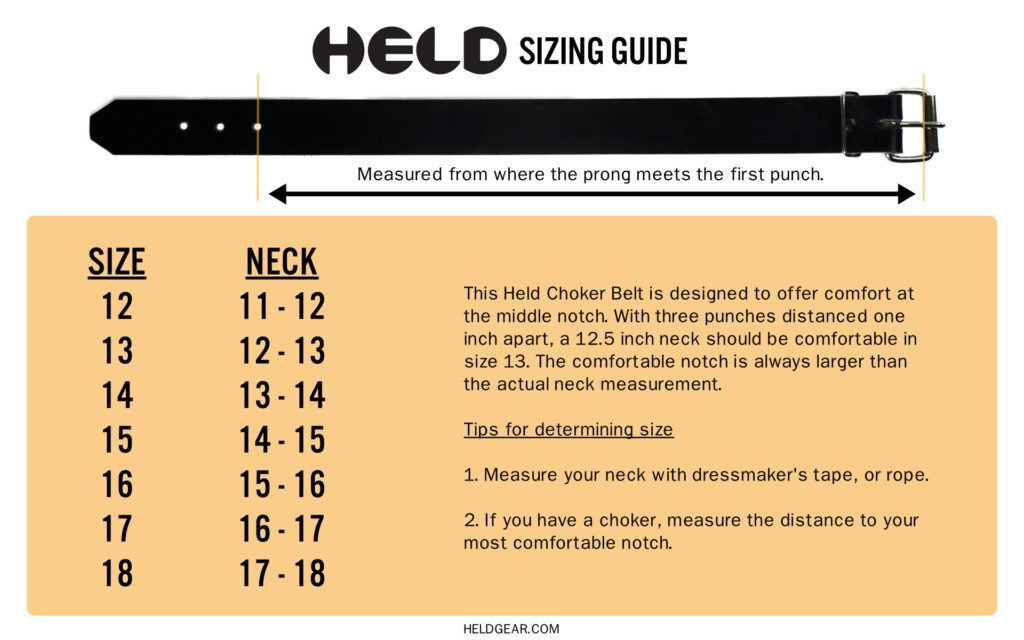
Held Chokers are designed in a greater variety of ways from belts, but the primary rule is that these products shouldn’t tighten more than your neck can stand, and should be just a little loose at the outermost notch.
This means that typically you will round up your neck measurement to the nearest size available. Refer to the sizing chart in your product listing.
PET COLLARS
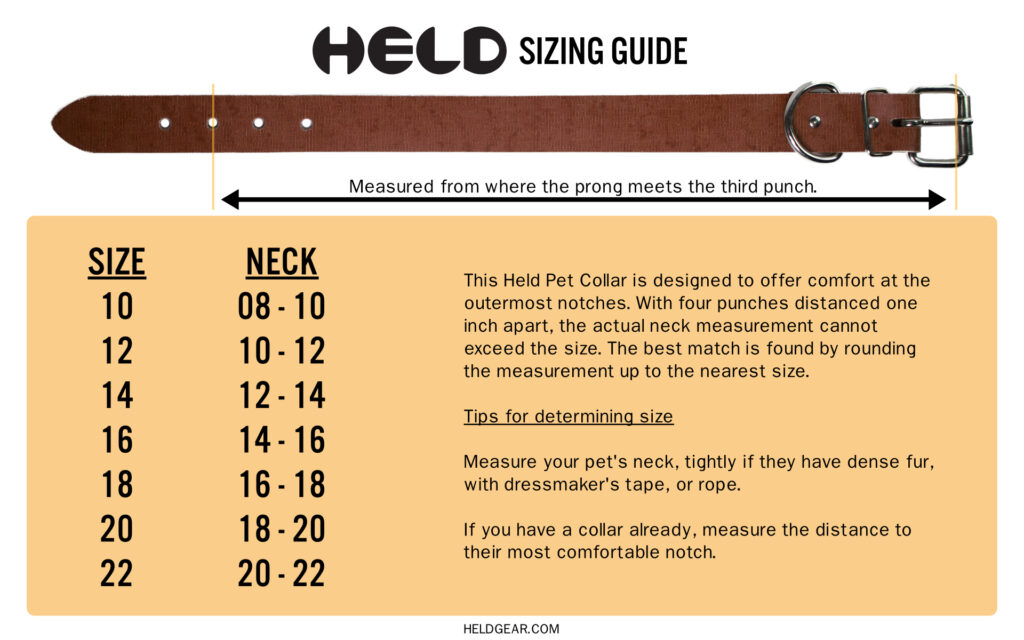
Pet collars are designed to be comfortable for the cherished animal wearing it, and yet it cannot be too loose, for it can slide off. Given the extreme range of dog measurements, a sizing theory was applied to build an inventory that can accommodate the range. The result is simple: The pet’s neck measurement cannot exceed the size of the collar, or it will be too tight.
Always utilize the sizing chart by matching your measurement to the table provided in the sizing guide.
WRISTBANDS
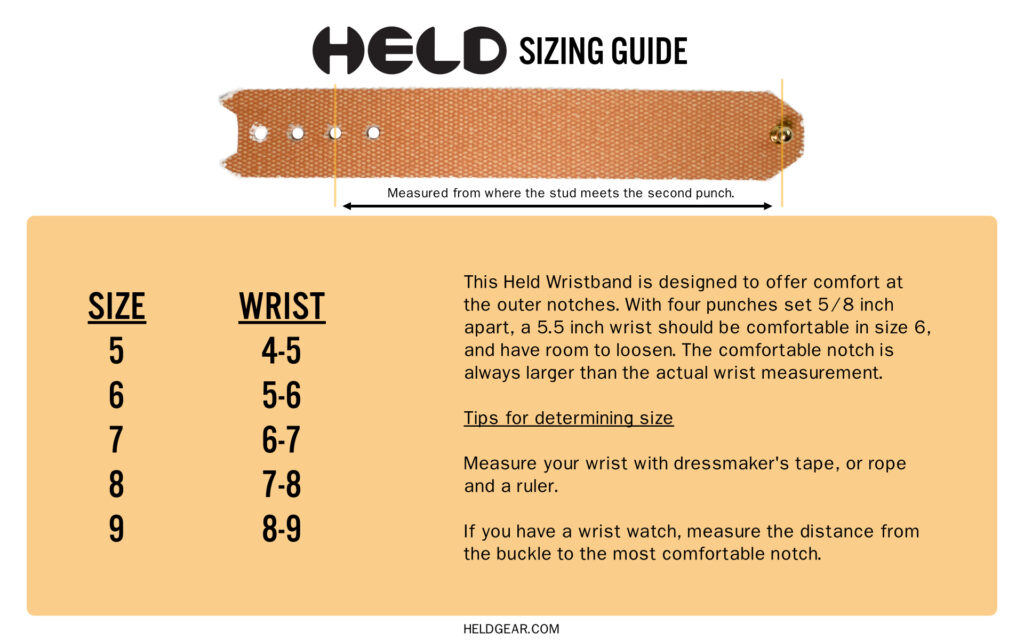
Held Wristbands are designed in a greater variety of ways from belts, but the primary rule is that these products shouldn’t tighten more than your wrist can stand, and should be just a little loose at the outermost notch.
This means that typically you will round up your wrist measurement to the nearest size available. Refer to the Sizing Guide in your product listing.
